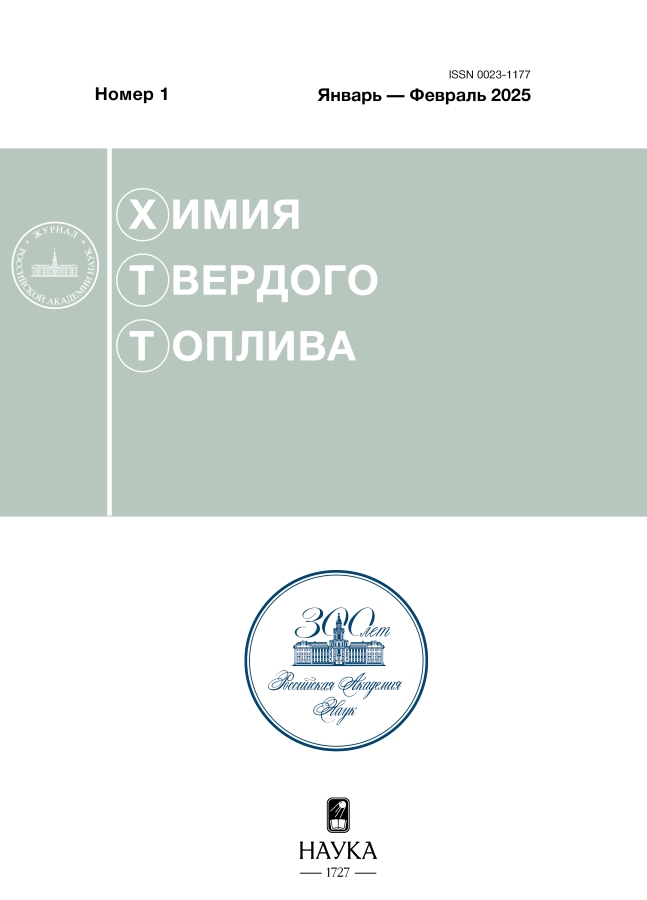Influence of resins and additives on the process of sedimentation in paraffin oils
- Autores: Werner A.N.1, Prozorova I.V.1, Yudina N.V.1
-
Afiliações:
- Institute of Petroleum Chemistry of the Siberian Branch of the Russian Academy of Sciences
- Edição: Nº 1 (2025)
- Páginas: 33-39
- Seção: Articles
- URL: https://ruspoj.com/0023-1177/article/view/684044
- DOI: https://doi.org/10.31857/S0023117725010054
- EDN: https://elibrary.ru/KUFOXW
- ID: 684044
Citar
Texto integral
Resumo
The formation of sludge in high-paraffin oil with added resins of various compositions and an inhibiting additive is investigated. It is found out that the amount of sludge decreases with an increase in the concentration of additives of resins with a lower surface tension value and a higher content of aromatic structures and heteroatomic components in their composition. With an increase in the fraction of resins with enhanced aliphaticity and the content of polysubstituted aromatic structures, an increase in the amount of oil sludge, and a decrease in the efficiency of the additive occur. The observed decrease of low-molecular n-alkane fraction and the reduction in average sizes of paraffin hydrocarbon aggregates are due to an increase in the amount of additives of petroleum resins in the composition of asphaltene–resin–paraffin deposits.
Palavras-chave
Texto integral
Sobre autores
A. Werner
Institute of Petroleum Chemistry of the Siberian Branch of the Russian Academy of Sciences
Autor responsável pela correspondência
Email: paterlini@vk.com
Rússia, Tomsk
I. Prozorova
Institute of Petroleum Chemistry of the Siberian Branch of the Russian Academy of Sciences
Email: piv@ipc.tsc.ru
Rússia, Tomsk
N. Yudina
Institute of Petroleum Chemistry of the Siberian Branch of the Russian Academy of Sciences
Email: natal@ipc.tsc.ru
Rússia, Tomsk
Bibliografia
- Van der Geest C., Guersoni V., Merino-Garcia D. // Energy & Fuels. 2018. V. 32. P. 56. https://doi.org/10.1021/acs.energyfuels.8b00269
- Sulaimon A.A., Kavinraj G., Suyash V. // Journal of Engineering. 2021. V. 4. P. 120. https://doi.org/10.61762/pajevol4iss3art6542
- Ansari F., Shinde S., Kumar L. // Energy & Fuels. 2023. V. 38. P. 156. https://doi.org/10.1021/acs.energyfuels.3c02124.
- Левитина И.В. // Нефтегазовые технологии. 2008. № 11. С. 2.
- Агаев С.Г., Гребнев А.Н., Землянский Е.О. // Нефтепромысловое дело. 2008. № 9. С. 46.
- Персиянцев М.Н. Добыча нефти в осложненных условиях. М: Недра, 2000. 651 с.
- Ляпин А.Ю. // Science & Technologies: Oil and Oil Products Pipeline Transportation. 2021. № 6. С. 630.
- Dao Quoc T., Dao Viet T. // Vietnam Journal of Catalysis and Adsorption. 2024. V. 12. P. 100. https://doi.org/10.62239/jca.2024.039
- Fuzmic E., Radosevie M. // Fuel. 2008. № 87. Р. 2943. https://doi.org/10.1016/j.fuel.2008.04.006
- Воробьев А.Е., Агхамохаммадигалехджуги М., Хабаров Д.Н. // Вестник РУДН. Серия: Инженерные исследования. 2014. № 1.
- Литвинец И.В., Небогина Н.А., Прозорова И.В. // Вестник ПНИПУ. Химическая технология и биотехнология. 2017. № 4.
- Баймухаметов М.К. Совершенствование технологий борьбы с АСПО в нефтепромысловых системах на месторождениях Башкортостана: Дис. … канд. хим. наук. Уфа, 2005. 137 с.
- Горбаченко В.С., Демяненко Н.А. // Вестник Гомельского государственного технического университета им. П.О. Сухого. 2016. № 3 (66). С. 17.
- Гуров Ю.П. Моделирование процессов кристаллизации и структурообразования в системах твердых углеводородов нефти в присутствии депрессорных присадок и полиолефинов: Дис…. канд. тех. наук. М., 2003. 146 с.
- Прозорова И.В., Серебренникова О.В., Лоскутова Ю.В., Юдина Н.В. // Известия ТПУ. 2007. № 2.
- Хужакулов А.Ф., Кобилов А.Б. // Теория и практика современной науки. 2019. № 3 (45).
- Yakavets N.V., Krut’ko N.P. // Sviridov readings. Iss. 8. Minsk, 2012. P. 253.
- Прозорова И.В., Лоскутова Ю.В., Юдина Н.В. и др Ингибирующая присадка полифункционального действия для парафинистых и высокопарафинистых нефтей. А. с. 2467054 РФ // Б.И. 2012. № 32. С. 7.
- Loskutova Y.V., Ryzhova N.S., Yudina N.V., Beshagina E.V. // Procedia Chemistry. 2015. V. 15. P. 49.
Arquivos suplementares














